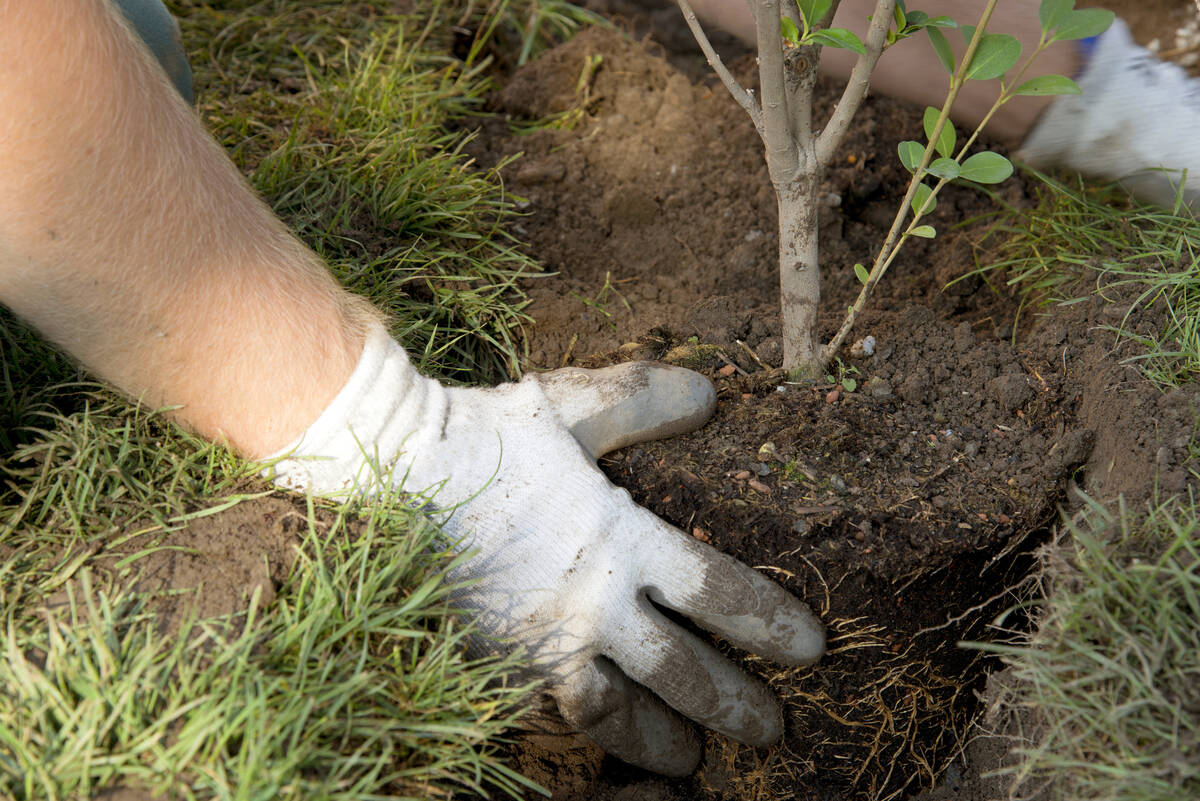Test your knowledge of gardening in desert Southwest
Take this quiz and see how you stack up against other desert gardeners.
1. A dead branch on a peach tree during the summer usually means a problem. The problem is oftentimes:
A. Disease
B. Insect
C. Heat
D. Water
E. Pruning
2. A healthy plant that has been in the landscape for five years and that can comfortably fit in a 5-gallon nursery container should be watered with:
A. 1 gallon of water each time it’s watered
B. 2 gallons of water each time it’s watered
C. 5 gallons of water each time it’s watered
D. 10 gallons of water each time it’s watered
E. 15 gallons of water each time it’s watered.
3. The best time to plant landscape trees and shrubs is:
A. Any time of the year
B. When its coldest
C. Just before it gets hot
D. Just before it gets cold
E. Spring or fall months
4. Desert trees (xeric trees) use less water than nondesert trees (mesic trees). True or false.
5. When using plants to reduce summer cooling costs:
A. Shade all the walls of your home with evergreen plants.
B. Shade the north and east sides of the home with deciduous plants.
C. Shade the south and west sides of the home with deciduous plants.
D. Shade the east and west sides of the home with evergreen plants.
E. Shade the north and south sides of the home with evergreen plants.
Answers
1. Any of those answers could be correct, but the most common reason a single or several branches facing south or west die on a peach tree in the summer is because of borers (insects). In our desert part of the country, the most common borer is probably the flatted apple tree borer; a flat-headed “worm” when it’s young but a winged beetle when it matures.
These beetles deposit their eggs on trees most commonly in the early spring, but it could be done any time until early summer. Once these eggs hatch, the small worm or larva tunnels into the tree where it feeds on its juicy parts just under the bark. Here is where gets larger, from a creamy white, flat-headed worm to a darker beetle with wings and finally pupates a few months later. As an adult, it flies to find a mate and start the egg process all over again.
2. For some who need some help knowing how much water to give a plant each time it’s irrigated this rule of thumb can be helpful. A 5-gallon plant should get 5 gallons of water. A 15-gallon plant should get around 15 gallons of water each time it’s irrigated.
Water in the soil acts as a storage reservoir for the plant roots to draw upon until its next irrigation. The first water to be used by the plant is in the upper parts of the soil. Later it will draw on the water deeper in the reservoir as the upper soil gets drier from evaporation and plant use.
Where water is located, plant roots grow. If they draw upon the deeper water, then roots grow there. If they constantly draw upon the shallow water because of daily watering, then plant roots will grow shallow. This is why it’s important to not water shrubs and trees daily. Shallow, frequent irrigations encourage the growth of shallow roots. Shallow rooted plants will become problem plants later.
3. The best time to plant landscape trees and shrubs is always during the cooler months of spring and fall, never just before or during the hottest months. In the Las Vegas area planting time is typically from the end of January until about March in the spring and from the end of September through October in the fall.
Avoid planting trees and shrubs during the coldest months and the hottest months. Planting just before it gets hot invites trouble unless you have no choice. Planting during the heat or cold increases the chance of plant death and the time they struggle to establish themselves.
4. That’s a tricky question and very confusing. That’s why it’s important to note the mature size of a tree or shrub when buying it and putting it in your landscape. Generally speaking, the larger a plant can grow, the more water it will need later as it gets bigger in future years.
Not my problem, you say? Yes, it is.
A large plant is difficult to remove emotionally and financially whether it is you or someone else. As a tree gets larger, it needs more and more water.
Desert trees (xeric) are not inherently low in their water use. But they can tolerate less frequent irrigations. Desert trees and shrubs will “speak to you” and tell you that it is time for a drink. That’s what gives them an edge growing in the desert.
Desert trees will handle as much water as you want to give them. They take this extra water and convert it into luxurious growth. That’s why you see such long, ungainly growth in young desert trees after getting plenty of water. This luxurious growth, along with their leaf density (they drop their leaves when running out of water) can be used to gauge when to water desert trees or not.
5. There are several methods to reduce summer cooling costs. But a landscape method is to shade the south and west walls and windows of your home with deciduous, not evergreen, trees and shrubs. It’s even better if you use xeric plants (desert trees and shrubs) to shade these walls and windows because you can irrigate them less often and save water. Of course, there is no saving of water if they are not on separate irrigation valves.
A general rule of thumb is to plant trees and shrubs a distance of about half their mature height from the house wall. This means a 30-foot tree should be planted about 15 feet from the foundation. You can plant closer than this, but remember they will require pruning to keep them growing away from the house.
The roots of plants planted in the desert grow where there is irrigation water. Providing at least 3 feet distance from these walls reduces the chance of root invasion and water damage to your concrete foundation.
Keep the soil dry that surrounds your home and weed-free. This is less inviting to bugs that might enter your home in the spring and fall months.
Bob Morris is a horticulture expert and professor emeritus of the University of Nevada, Las Vegas. Visit his blog at xtremehorticulture.blogspot.com. Send questions to Extremehort@aol.com.





























